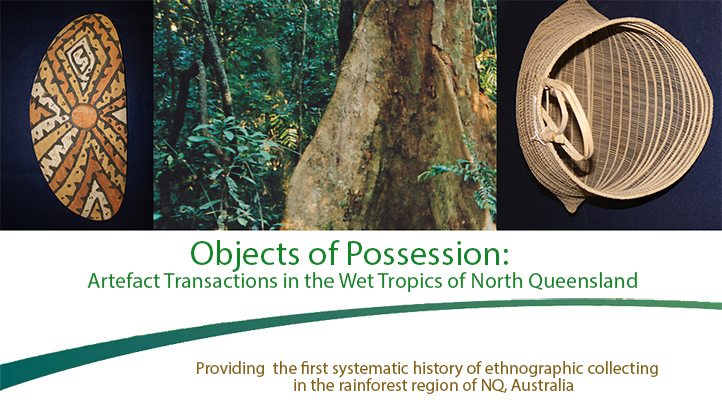Author: Trish Barnard
Collector: Edmund James Banfield
Born: Toxteth Park, Liverpool, England, 1852.
Died: Dunk Island, Queensland, 1923.
Active: As an ethnographic collector, Banfield was active from the 1880s to 1923 at Dunk Island, Hinchinbrook Island, Cardwell and Tully.
Background biography: For 25 years Edmund Banfield lived on Dunk Island where he collected material culture from local Aboriginal people. As a small child, he had migrated from England to Victoria with his family, who established a newspaper in Ararat which remained in the family until the 1960s. While attending school Banfield joined the printing business and later worked in Melbourne and Sydney before venturing north in 1882 to become reporter and sub-editor for the Townsville Daily Bulletin in North Queensland. After camping on Dunk Island, he fell in love with the isolated and unspoilt environment and applied for a thirty-year lease of the island in 1896. With his wife Bertha, he moved to the island the following year, partly to improve his tubercular condition and nervous disposition. They lived a simple life, though they had an Irish servant and a few local Aboriginal people as helpers. Banfield became an avid naturalist who published his discoveries in various newspapers and journals. He ventured to neighbouring islands and also collected material from middens left by local Aboriginal people at camps such as Tool-guy-ah, a small island south of Dunk.
In his most well-known publication, The Confessions of a Beachcomber, he documented the manufacture of fish hooks from oyster shells (Crassostrea commercials), using coral (Acropora or Staghorn coral) to file the edge of shells into shape. Banfield collected stone axes, boomerangs, cross boomerangs, firesticks, children’s toys and spears. His collection included unique spears, with echidna quills bound into a four-pronged arrangement, which were used for fighting. The echidna quills made them very difficult to remove. Another spear (QE-1774 Spear, Queensland Museum collection) is tipped with a bunch of barbs of the common stringray (Trygonoptera testacea ). Banfield also travelled with his Aboriginal companions, documenting their story places, sites of cultural significance in the region and their behaviour, much of which was published in the Beachcomber book. He noted a corroboree performed on Dunk Island by visitors who had travelled down from Princess Charlotte Bay, remarking on how enthusiastically the usually-reserved Dunk Island Aborigines joined in the dance, as if the ‘the spirit of Terpsichore’ was upon them.
Banfield’s recordings have provided important insights into life on the small tropical island, not just his own and Bertha’s, but also the daily lives and traditions of his Aboriginal companions living on country.
Sources:
Banfield, E. J. (1908) The Confessions of a Beachcomber, London, T. Fisher Unwin.
